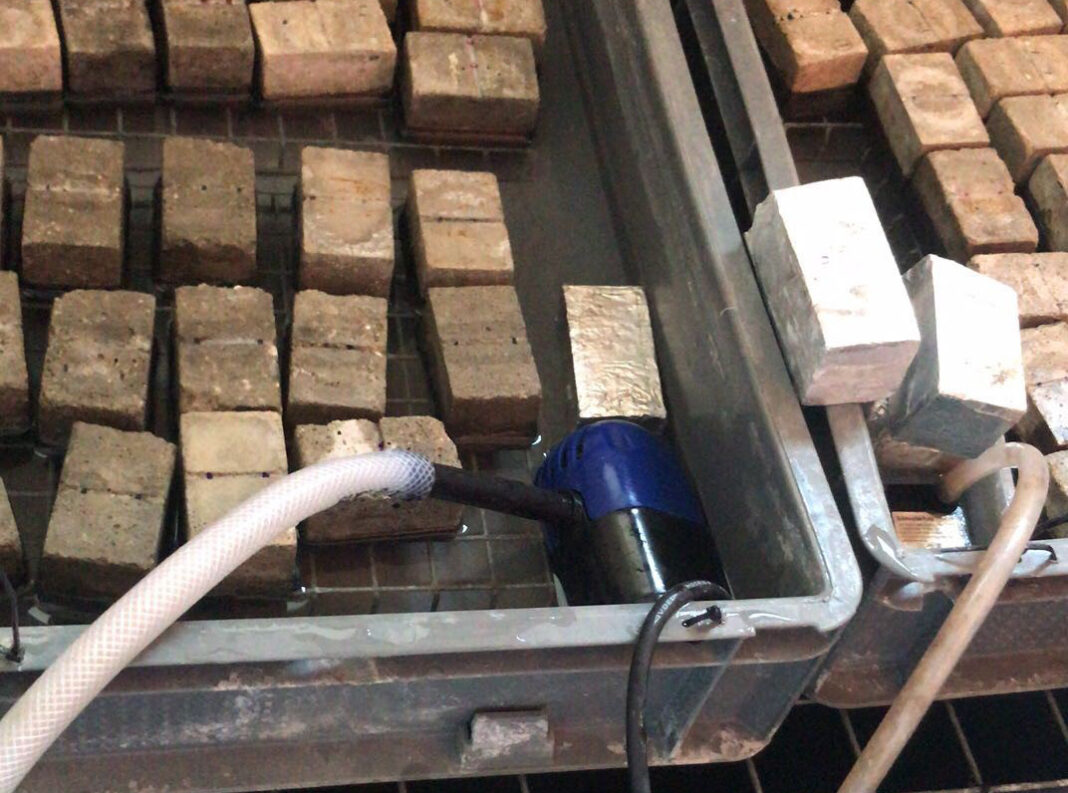
BACTERIA could soon be used to end the need for the human repair of infrastructure that carries complex or costly maintenance needs.
“This is no longer science fiction,” Professor Kevin Paine of the University of Bath’s department of architecture and civil engineering, told Project Scotland. “I honestly think with the way the trials are going we could see this being used within ten years – possibly five.”
He has been researching the concept of using bacteria to ‘heal’ concrete since 2011, after a journalist asked if he had heard of the concept during an interview for an architecture journal. Shortly after, he travelled to the Netherlands to meet with Dr Henk Jonkers, a micro-biologist at Delft Technical University, who had been exploring the concept for a number of years.
It involves incorporating bacteria spores into concrete mixtures. Once structures containing the bacteria get to a point where cracking occurs, the bacteria fill the gap by converting nutrients into limestone.
“Buildings are designed with consideration for how the concrete will be in 20 to 50-years’ time,” Professor Paine added. “But with self-healing concrete it may well be that they remain as they were when first built, because the concrete won’t degrade as it will have repaired itself several times.”
Since his trip to the Netherlands, Professor Paine has been working alongside colleagues from the University of Bath’s biology and biochemistry department. Ironically, he dropped biology before sitting his GCSEs in school saying he did not find it interesting. “I actually find it incredibly fascinating now,” he said. “I’m able to answer questions about the microbiology side of the research and suggest ways we can make it work better.”

He insists, however, that biologists are imperative to the research – his primary role is to provide knowledge about how cement works and the behaviour of concrete.
The main challenge for the research is to ensure the bacteria remain alive and are able to continuously repair damage – as opposed to simply filling a crack and then perishing. Professor Paine said that using the method would be more costly than traditional concrete construction, with the obvious carrot being that money and time would be saved on long-term maintenance.
This would be negated if only one healing process was possible.
Now that we know self-healing concrete is a reality and we can make it happen, Professor Paine said the question is how to utilise this in design.
One way which could ensure the bacteria remain alive is to have minuscule ‘pipes’ within the concrete. The pipes contain the nutrients, or food, required by the bacteria which would allow for them to reproduce and repair once cracks emerge. They would then lie dormant as spores until more food is filtered through any cracks that appear. However, Professor Paine said some within the construction industry are sceptical of this method.
“They don’t like the idea of having these flow networks within their concrete, because they think it might make it easier for substances to get to the reinforcement,” he explained. “If designed effectively, I think it’s a brilliant idea. But until industry gets on board, we’re going to have to continue with (bacteria) capsules mixed into the concrete and the problem with capsules is that they’re more likely to be one-off repair solutions.”
Professor Paine added that as research continues and the method is perfected to a point where self-healing concrete is used in construction, it’ll be more likely to be seen in projects involving structures where a need for repair would be catastrophic or extremely expensive – such as high speed railway lines or underwater and underground structures.
The Royal Society highlighted the research being undertaken on self-healing in a recent report on animate materials. The document states that an estimated £8-9 billion is spent annually by the UK construction industry on repair and maintenance of infrastructure, it continues by reading that ‘some of the biggest’ economic gains could be made by utilising living building materials such as self-healing concrete.
“What we’re trying to reduce is not so much the repair, but the expense of repair,” Professor Paine explained. “We want to take out the need for digging up roads or going underwater to get to these things and keep an eye on that – that’s expensive. If you’ve got a situation where you’re not sure if the concrete is going to self-heal or not, then you still need to keep monitoring it – whereas, if you know that the concrete is going to keep looking after itself without any need to be monitored, it’s a lot more cost effective.”










